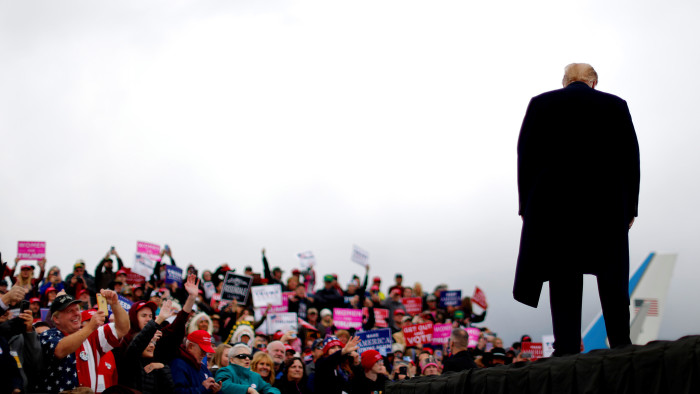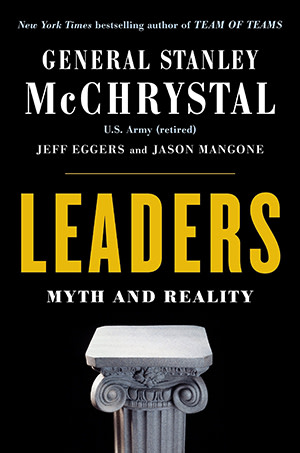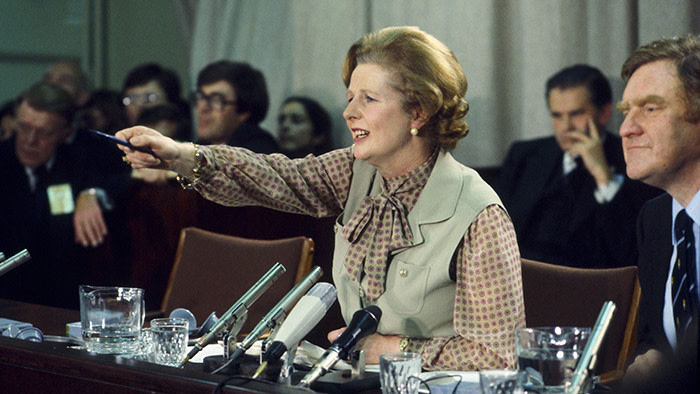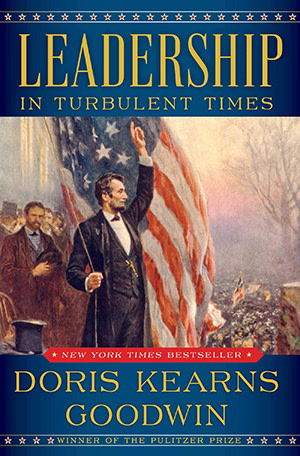The lure of leadership

Roula Khalaf, Editor of the FT, selects her favourite stories in this weekly newsletter.
In summer 1902, a few months into America’s Great Coal Strike, which was to prove one of the defining crises of his presidency, Theodore Roosevelt set out to finish reading a 10-volume biography of Abraham Lincoln. “I really believe I have profited,” he wrote to one of its co-authors, singling out a leadership lesson about Lincoln’s character: “To try to be good-natured and forbearing and to free myself from vindictiveness.”
Lincoln too was a voracious reader. He overcame his illiterate father’s tendency to destroy the future president’s books and whip him if he was found reading or telling stories to fellow farmworkers. “However dissimilar their upbringings, books became for both Lincoln and Roosevelt ‘the greatest of companions’,” Doris Kearns Goodwin writes in Leadership in Turbulent Times.
In Leaders: Myth and Reality, Stanley McChrystal also admits to an intensive reading habit. He devoured history, biography and memoir before, during and after his time as an army cadet at West Point as he worked his way up to become a four-star general.
These books appear at a critical moment for global leadership. In business, the imperial and imperious leadership style typified by chief executives such as General Electric’s Jack Welch or Microsoft’s Steve Ballmer has fallen out of favour. A more collaborative, team-based approach seems to be taking its place. More women are rising to senior corporate roles, albeit slowly, changing the patriarchal shape of business leadership, and the influence of bottom-up movements is spreading. Yet an unhealthy media obsession with the actions of high-profile chief executives and entrepreneurs persists.
In politics, “strong men” are enjoying a resurgence, from Brazil’s Jair Bolsonaro to Rodrigo Duterte of the Philippines. This week’s US midterm elections were seen as a verdict on the record and character of Donald Trump, the most self-obsessed and divisive US president in decades — and duly produced a divided result. The “Great Man” theory that individuals make history happen, first popularised by Thomas Carlyle in the mid 19th century, has life in it yet.

Would-be Lincolns or Theodore Roosevelts could read McChrystal’s book through this lens, simply to learn lessons from potted biographies of 13 prominent leaders. Indeed, it is modelled on one of the first such collections: Plutarch’s Lives, in which the historian from the 1st century AD compared 24 pairs of ancient personalities, one Greek, one Roman.
McChrystal, though, is firmly on the side of Carlyle’s opponents. He writes that “leader-centrism” helps propagate a trio of myths: that leadership is based on a static checklist or formula; that leaders themselves are more important than the team that surrounds them; and that leadership is about driving people towards an outcome. Leaders should instead “shift their mindset to think of themselves as a node in a network, rather than the top apex of a triangle”.
To illustrate their point, McChrystal and his co-authors, all former US military men, focus on just six Plutarchan pairs. They make their selection up to a baker’s dozen with a chapter on the troubled example of Robert E Lee, the exceptional US general who picked the Confederate side in the American civil war, and whose military prowess McChrystal once revered.
The pairings are sometimes surprising, bordering on the eccentric — Walt Disney and Coco Chanel are “The Founders”; Albert Einstein and Leonard Bernstein “The Geniuses”; William Tweed, the corrupt Tammany Hall boss, and Margaret Thatcher “The Power Brokers”. But their stories, distilled from many longer biographies, are deftly and compellingly told. The book’s call for a redefinition of leadership as a complex, dynamic system — to which leaders, their followers and the context all contribute — is wise, insightful and timely.

McChrystal brings his personal experience to bear in the section on “The Zealots”, which matches two murderers, Robespierre, the 18th-century French revolutionary, and Abu Musab Al-Zarqawi, the leader of al-Qaeda in Iraq, whom the general helped track down and kill in 2006. In times of chaos, zealot-leaders offer their followers stability and energy, he writes. Their passionate certainty is “clarifying and comforting”. Equally sobering is his reminder that it was then US secretary of state Colin Powell’s insistence on Zarqawi’s importance in his 2003 speech to the United Nations that reinforced his position as a leader of resistance to the subsequent allied occupation of Iraq.
The research for Leaders started with the question “how did he or she lead?” — but McChrystal’s team disavowed that approach as “uncontroversial, with the ring of a familiar shorthand”. They preferred to examine what made particular styles of leadership effective in different situations.
By contrast, Doris Kearns Goodwin makes “how they led” the key question of the final section of Leadership in Turbulent Times. Perhaps inevitably for a Pulitzer Prize-winning historian, she has written a more conventional appraisal of leadership, but a highly readable one.

Goodwin divides the lives of four former US presidents — Lincoln, Theodore Roosevelt, Franklin D Roosevelt and Lyndon Johnson — into three sections, focusing the last on case studies of how each handled a critical issue in his presidency. She brilliantly draws the outline of their lives and the often extraordinary “crucible experiences” that marked their path to the White House.
Her description of FDR’s agonising and ultimately triumphant ascent to the platform at the Democratic convention in New York in 1924 — his first public appearance after his disabling bout of polio — is typical of the heights she often reaches: “After what seemed a long-drawn moment of tension, he reached the rostrum, handed off his crutches, gripped the lectern edges with his powerful, viselike grip, tilted back his head, and ‘across his face there flashed a vast, world-encompassing smile’ . . . He stood as the living emblem of a man who had truly transformed his own pain and necessity into glorious gain.”
Like McChrystal, though, Goodwin makes clear that leadership is not just a story of one person influencing a group towards an outcome, but “a two-way street” that links individual character, the contributions of teams and the popular context. Her four presidential examples “show how their leadership fit the historical moment as a key fits a lock. No key is exactly the same; each has a different line of ridges and notches along its blade. While there is neither a master key to leadership, nor a common lock of historical circumstance, we can detect a certain family resemblance of leadership traits as we trace the alignment of leadership capacity within its historical context”.
The leadership style of the current US president haunts both books. It is hard not to read criticism of the unpredictable, unreflective and notoriously unbookish Trump into Goodwin’s praise for FDR, whose life was “an argument [for] the conclusive importance of the character and intelligence of the leader in fraught times”. McChrystal’s reversal of his life-long unquestioning admiration for Robert E Lee stands in contrast to Trump’s defence of memorials to the Confederate general and his fellow commanders.
But McChrystal’s nuanced assessment of modern leadership also offers the most interesting analysis of Trump’s appeal. The “Great Man” theory persists in part because we have a preference for simple explanations of leadership over the messy, difficult reality of leading, he writes. Supporters of the US president would argue that he has registered economic successes; McChrystal points out leadership is often more about what leaders symbolise than what they achieve.
“Those who emerge as successful leaders are not necessarily those with the best values, or the most comprehensive record of results,” he writes, “but those who cohere with sources of human motivation.” This, he adds, explains why followers “might turn their attention to the hollow but optimistic leader, or be pulled by the leader who talks a big game but who holds a weak record”.
Andrew Hill is the FT’s management editor
Leaders: Myth and Reality , by Stanley McChrystal, Jeff Eggers and Jason Mangone, Portfolio Penguin, RRP£14.99/$30, 458 pages
Leadership in Turbulent Times , by Doris Kearns Goodwin, Simon & Schuster/ Viking, RRP$30/£20, 496 pages
Join our online book group on Facebook at FTBooksCafe. Subscribe to FT Life on YouTube for the latest FT Weekend videos
Comments